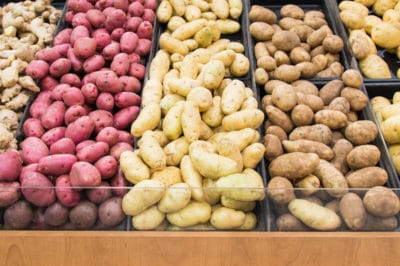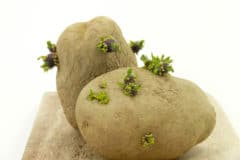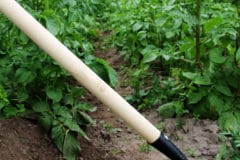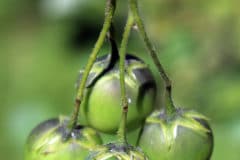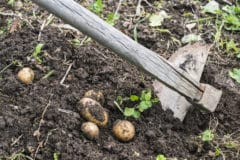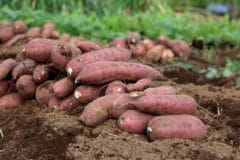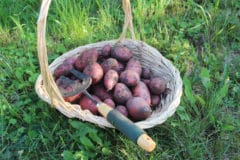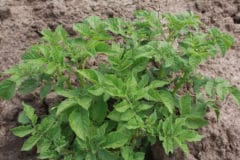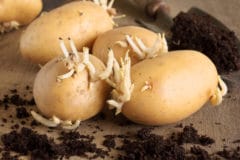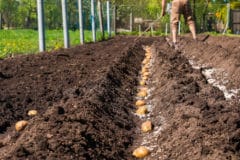Origin of the Potato
Archeological evidence indicates the potato originated in the Andes. Today’s domesticated Andean potatoes include Solanum tuberosum, Solanum ajanhuiri, Solanum curtilobum and Solanum juzepczukii. The Andean potato was probably first domesticated about 10,000 years ago. However, potatoes from the Andes that were taken to Chilean lowlands became the branch that were progenitors of the modern domesticated potato, introduced into Europe by the Spanish.
Potato Varieties Worldwide
Approximately 5,000 cultivated potato varieties are known to exist today. At least three thousand – which belong to eight or nine different species – are found in the Andes alone, primarily in Bolivia, Chile, Colombia, Ecuador, and Peru. In addition, there are around 200 wild species and subspecies. Many of these have been crossed to promote disease resistance and other valuable characteristics into domestic potatoes.
Potatoes in Europe
Potatoes are an essential crop in Europe, particularly in eastern and central Europe. Per capita production in this area is the highest in the world. Potatoes dramatically changed Europe’s agriculture, allowing a large population expansion. However, dependence on the potato – more specifically on a single variety – also caused serious famines in Europe, Ireland and Scotland during the 1800s due to potato blight.
Potato Production Worldwide
China is the world’s largest producer of commercial potatoes, growing more than 25 percent of the crop in 2017. India is next, although with less than half the production of China. Russia produces about eight percent and the Ukraine produces about 6 percent of the potatoes grown each year. The US produces approximately 5 percent of the world’s potatoes.
Potato Production in the US
Idaho, Washington and Wisconsin lead the nation in potato production. North Dakota, Oregon and Colorado come next – each produces about the same amount, but the production of all three combined does not equal that of Idaho. Minnesota, Michigan, Maine and Nebraska also grow potatoes commercially. Although California is thought of as a major agricultural producer in the US, it does not grow a lot of potatoes.
Growing Potatoes in the Garden
As you might expect given its origins, the potato is a cool-season crop. However, a hard freeze will kill the tops, so it’s best not to plant until about three weeks before the expected last frost date. Potatoes are heavy feeders and need rich soil that drains well. They also need a steady supply of water while growing; stop watering once the tops begin to die down.
Choosing Varieties
Your biggest problem in choosing potato varieties may be the number of choices. These are well-regarded for flavor and production:
- Bintje – yellow skin and flesh
- Caribe – purple skinned with white flesh
- German Butterball – heirloom, waxy yellow flesh
- Green Mountain – irregular tubers, excellent flavor
- Irish Cobbler – a classic baker
- Yukon Gold – excellent flavor and yellow flesh.
Preparing the Soil
In order to grow tubers of any size, the potato needs loose, friable soil. A sandy loam is ideal. If you have heavy clay, either grow in raised beds or add lots of humus in the form of well-rotted leaves or aged manure. Avoid fresh manure, as it can cause scab. You can also add coarse sand to improve tilth and drainage. Work the soil well by digging or rototilling.
Potato Nutrients
Like most plants, potatoes need nitrogen, phosphorus and potassium. Potassium is particularly important in growing this crop. Wood ashes are a good source and also help make the soil more acidic, as do pine needles. Amendments like kelp and greensand also add micro-nutrients the potato needs. If you use commercial fertilizer, try to find an organic source with an NPK ratio of 10-10-10. Work it into the soil prior to planting.
Hilling Potatoes
Potato tubers must be protected from the sun to prevent them from developing the toxic substance solanine. Many gardeners plant them in a trench about six to eight inches deep. As the plants grow, the gardener hoes loose soil around them, leaving about six inches of stem exposed. Most potatoes must be hilled two or three times during the growing period.
The Harvest
When potato plants flower, start counting days. About three weeks later, you should be able to harvest new potatoes. Anything larger than a hen’s egg can be used for eating. Once the plant tops begin to wilt and die down, it’s a sign larger tubers have developed. About three or four weeks after the tops die down, your crop is ready to harvest.
